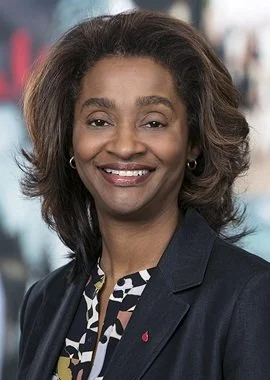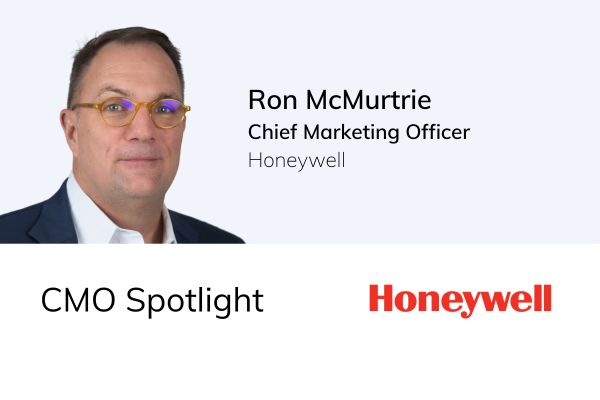Marketing in the Nonprofit Sector: Lessons from Blood Cancer United’s Chief Experience Officer
Lynn Godfrey is the SVP, Chief Experience Officer for Blood Cancer United, formerly The Leukemia & Lymphoma Society, the largest nonprofit dedicated to creating a world without blood cancers through investments in groundbreaking research, patient care, and public advocacy. Leading an award-winning, multidisciplinary marketing, digital, and communications team, she stewards the Blood Cancer United brand to drive patient impact, revenue growth, and audience engagement. An expert in transformative marketing, Lynn led the organization through a multi-year full-scale rebranding effort, and under her strategic direction, her team’s work has resulted in the organization garnering recognition on Fast Company’s lists of Brands that Matter (2022) and Best Workplaces for Innovators (2023).
A seasoned executive and thought leader with +20 years of experience in vision-driven innovation and brand transformations in non-profit, public, and corporate sectors, Lynn has delivered results for such leaders as the Girl Scouts of the USA, American Red Cross, PBS Kids, Nickelodeon, and American Express. Lynn’s thought leadership has been featured in Forbes, and she sits on the Forbes Nonprofit Council. Launching her career in advertising at Young and Rubicam, she earned her BA from Wesleyan University and a master’s at Northwestern’s Kellogg School of Management. Lynn resides in New Rochelle with her family and pup.
Marketers are grappling with how to make their strategy feel more impactful and human in 2025, but in the nonprofit world, that challenge comes with the added pressure of limited budgets and expansive missions. For Lynn Godfrey, Chief Experience Officer at Blood Cancer United, the solution lies in staying intentional, deeply segmenting audiences, and adapting quickly in a constantly evolving landscape.
We spoke with Godfrey about how her team approaches media strategy, personalization, and content creation in a highly mission-driven space.
This interview captures it all, including what for-profit marketers can learn from the nonprofit world.
Q1 | How do you currently allocate your marketing budget across channels, and what limitations are affecting your ability to execute successful campaigns?
Lynn Godfrey emphasizes the importance of being highly intentional with nonprofit marketing spend, prioritizing owned channels to engage their existing community while also experimenting with new platforms to reach philanthropic audiences beyond their core base.
“Like all organizations—and particularly nonprofits—we must be very intentional about how we spend. That makes our owned channels—such as our website, blogs, email, social media, events, PR, and partnerships—critical to the success of our campaigns. They allow us to consistently engage our current community and deepen awareness with them. At the same time, our goal is to reach new audiences.
For our recent brand launch, we strategically invested in platforms and tools we hadn’t used before, to ensure we weren’t just speaking to the same core audience. We focused on reaching individuals who are philanthropic, including those who already support other nonprofits but may not yet be connected to us.”
Q2 | How are you segmenting your audience, and which methods have been most effective for long-term engagement?
To ensure relevance and long-term engagement, Godfrey and her team use deep segmentation across their diverse stakeholder base—personalizing outreach by audience type, engagement level, and giving history, while strategically using CRM tools and media channels to reach current, lapsed, and prospective supporters. They know their audiences and use an array of tactics to engage with them accordingly.
“We serve a wide range of stakeholders—patients, caregivers, healthcare providers, researchers, volunteers, fundraisers, sponsors, business partners, donors, vendors, and employees. Within each group, we further segment to ensure communications are personalized and relevant.
For example, we may approach a lapsed patient who hasn’t connected with us in a year very differently from one who is actively engaged. The same applies to volunteers or donors—we speak to a first-time volunteer in a different way than someone who has supported us for decades. We also tailor communications to major donors versus mid-level donors and fundraisers, using different channels and levels of personalization.
For long-term relationships, a blend of high-touch interactions and consistent CRM-driven outreach—like email, direct mail, and digital engagement—has been most effective. When we consider marketing channels, we break audiences down into three groups: current, lapsed, and prospective. Current audiences are primarily reached through owned channels; lapsed audiences through a mix of owned and broader media; and prospective audiences through more expansive media outreach.”
Q3 | What metrics or KPIs do you use to measure campaign success, and where do you see gaps?
Similar to other industries, Blood Cancer United utilizes an array of metrics to determine their success.
Their KPIs include:
Total impressions
Media value
Website traffic
Donations
New patient engagement—specifically new patient households reaching out
“Our organic social KPIs are year-over-year growth of engagement, followership, and impressions.”
Q4 | How frequently are you creating content, and what challenges do you face in keeping messaging consistent?
Blood Cancer United is regularly curating and creating content to remain a thought leader in the space and inform their consumer base with trusted information.
“We are constantly creating content for our website, social media, blogs, and email newsletters. New content is created daily for various parts of our website. Our integrated content team works across the organization to maintain consistency in both messaging and tone of voice. The team also monitors news and cultural trends in real time, ensuring Blood Cancer United stays in the conversation as a thought leader and trusted source.”
Q5 | How is your organization adopting digital tools like SEO, AI, and social media, and what limitations do you face?
Godfrey shared that SEO has been deeply integrated into the development of their new website. With the help of their agency partner, GrowthSkills, they:
Developed blogs with targeted keywords to improve organic search rankings
Made web content more user-friendly and conversational
Built URLs and redirects to strengthen visibility and positioning on search engines
She also shared that social media remains one of the most important platforms to introduce their brand to diverse audiences. People engage daily, and platforms evolve quickly.
Godfrey shared that in order to maximize impact, they:
Use data-driven strategies to ensure content resonates
Experiment with trends, graphics, and flex our tone of voice to expand reach
Incorporate SEO principles and keywords into social posts, as reliance on hashtags declines
“Some limitations we have on organic social is keeping up with constant algorithm changes across platforms, especially when video content is being favored. What worked last month might not work today, so we stay proactive by monitoring trends, testing content types, and adjusting our strategy accordingly.
More broadly, we are continually seeking tools that drive efficiency and enhance analytics. Collaboration across teams—especially with IT and Innovation—ensures any new technology aligns with organizational goals and is thoughtfully vetted.”
Q6 | What is your industry doing differently than others? What do you admire about other industries?
“Nonprofits have emerged as some of the most trusted institutions in the U.S., particularly as
trust in other sectors has eroded. This positions us to fill an important gap—providing reliable, expert health information that people can depend on.
In terms of marketing, the ability to target precisely is essential. For nonprofits, every dollar matters, so minimizing waste and ensuring outreach reaches the right audiences is critical.”
Q7 | What are the most important trends that will carry into 2026?
AI: “We believe AI is here to stay, and we continue to explore ways to use it—along with data—to better reach patients, families, and supporters.”
Sustainability: “Preparing for the future requires sustainable approaches across operations and outreach.”
Authenticity and relatability: “Brands that show up as genuine and relatable—especially on social media—are building stronger connections.”
Precision targeting: “The increasing ability to target very specific audiences in digital spaces will remain a powerful trend.”
TLDR
Budget with Intention: Nonprofits must be hyper-strategic with spend by prioritizing owned channels like email, social, and PR while exploring new platforms to reach untapped audiences.
Deep Segmentation is a Must: Blood Cancer United personalizes outreach by engagement level and donor history, using different channels and CRM tools to speak to current, lapsed, and prospective audiences.
Content is Constant: Daily content creation (website, blog, email, social) keeps messaging consistent and positions the organization as a thought leader in real time.
Digital Tools in Motion: SEO, social media, and trend monitoring are integrated, but algorithm changes and tech vetting remain ongoing challenges.
Precision Matters: Nonprofits are among the most trusted sectors, but with tight budgets, targeting the right audience and minimizing waste is critical.
2026 Trends to Watch: AI, sustainability, authenticity on social media, and precision targeting are shaping the future of nonprofit marketing.
Lynn Godfrey’s strategic yet empathetic approach offers valuable lessons for any marketer navigating complex media and mission alignment. Whether you’re working in the nonprofit space or leading a brand in tech, healthcare, or retail, her insights reaffirm a timeless truth: authenticity, segmentation, and relationship-building still win.
Get insights by leaders like Lynn Godfrey and CMOs who are directly making marketing decisions in your inbox by subscribing to the newsletter below.































Over the past year, we’ve watched the following patterns emerge across seemingly unrelated sectors: rising consumer expectations, demand for authenticity, growing complexity, and the tension between automation and human connection.
We interviewed multiple marketers from an array of industries in our blogs below, and we discovered consistent trends across the board. Check out all of our industry blogs throughout 2025 from leaders at Blackbaud, Hiscox USA, Mimedx, MONPURE, Kimberly-Clark Professional, and more.